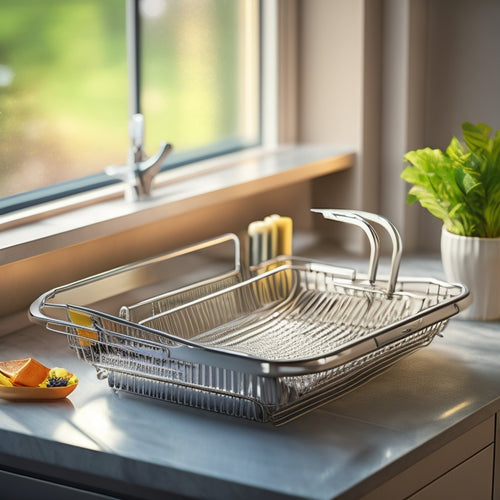
Empowerment Through Kitchen Safety Worksheets
Share
Acquiring kitchen safety skills is a critical step towards empowerment, enabling individuals to take control of their daily lives, make informed decisions about their diet and well-being, and develop the confidence and competence to prepare healthy meals independently. Effective kitchen safety worksheets cover essential practices, such as decoding food labels, safe food handling, and efficient microwave use. By mastering these skills, learners can build confidence in the kitchen, cultivate practical cooking habits, and reduce the risk of foodborne illnesses. As individuals develop proficiency in kitchen safety, they move closer to achieving autonomy in their daily lives, and uncovering the full potential of kitchen safety skills.
Key Takeaways
• Kitchen safety worksheets empower learners to develop fundamental practices, promoting independence and confidence in meal preparation.
• By mastering kitchen safety skills, individuals can make informed decisions about their diet and well-being, leading to healthier habits.
• These worksheets provide a valuable tool for individuals with special needs, offering detailed guidance on essential skills for kitchen navigation.
• Through kitchen safety education, learners can reduce the risk of foodborne illnesses, promoting a safer and healthier cooking environment.
• By building confidence in the kitchen, individuals can cultivate practical cooking habits, leading to increased autonomy and self-assurance in daily life.
Kitchen Safety Essentials Covered
What are the fundamental kitchen safety practices that learners with special needs must master to guarantee a safe and healthy cooking experience?
The kitchen safety worksheets cover essential practices that ensure a secure cooking environment. One significant aspect is decoding food labels, enabling learners to make informed choices about ingredients and allergens.
Safe food handling practices, such as proper storage and handling, are also emphasized to prevent contamination. Additionally, the worksheets teach efficient microwave use, correct food storage methods, and practical tips on safely using kitchen appliances.
Empowering Learners for Independence
By acquiring these fundamental kitchen safety practices, learners with special needs can take a significant step towards independence, as they develop the confidence and competence to prepare healthy meals and manage their daily lives with autonomy.
This empowerment enables individuals to engage in independent living, where they can make informed decisions about their diet and well-being.
The acquisition of practical skills, such as safe food handling and cooking, fosters a sense of self-sufficiency and autonomy.
As learners master these essential skills, they become more confident in their ability to navigate the kitchen safely and effectively, ultimately leading to a more independent and fulfilling life.
Building Confidence in the Kitchen
As learners with special needs develop proficiency in kitchen safety practices, they begin to build confidence in their ability to prepare healthy meals and navigate the kitchen with autonomy.
This confidence boost is vital, as it directly correlates with kitchen competence. When individuals master kitchen safety skills, they feel more comfortable and self-assured in their ability to cook and prepare meals independently.
This, in turn, fosters cooking confidence, allowing them to explore new recipes and culinary techniques.
Life Skills for Daily Success
Mastering kitchen safety skills is a key element of daily life management, enabling individuals with special needs to develop the proficiency and self-assurance necessary for independence in meal preparation and overall well-being.
By acquiring these essential skills, individuals can cultivate practical cooking habits, leading to healthier meal options and a more independent lifestyle.
Kitchen safety skills are also instrumental in promoting healthy habits, as they educate individuals on proper food handling, storage, and preparation techniques. This, in turn, reduces the risk of foodborne illnesses and ensures a safer cooking environment.
Navigating the Kitchen With Ease
Kitchen safety worksheets are valuable tools for individuals with special needs. They provide detailed guidance on essential skills like using kitchen appliances and proper food storage methods. By mastering these skills, individuals can confidently navigate the kitchen and prepare meals easily.
Effective meal preparation and cooking techniques are crucial for creating healthy, balanced meals. These skills enable individuals to develop independence and autonomy in the kitchen. Kitchen safety worksheets help learners acquire these skills, emphasizing safety and efficiency.
Frequently Asked Questions
Can These Worksheets Be Adapted for Learners With Severe Disabilities?
"Absolutely, with boundless creativity, these worksheets can be adapted for learners with severe disabilities through thoughtful, tailored modifications, providing inclusive learning opportunities that foster autonomy, confidence, and kitchen safety mastery, ultimately empowering individuals to thrive."
Are the Worksheets Available in Digital Formats for Easy Accessibility?
Digital formats of kitchen and food safety worksheets cater to visual learners, enhancing accessibility and convenience for individuals with special needs, allowing for tailored learning experiences that promote independence and confidence in the kitchen.
How Often Should Kitchen Safety Skills Be Reviewed and Practiced?
Like a recipe for success, regular practice is the secret ingredient to skill retention, ensuring kitchen safety skills remain sharp and effective; review and practice every 2-3 months to maintain proficiency and confidence.
Can Caregivers or Teachers Use These Worksheets for Group Instruction?
Caregivers or teachers can effectively use kitchen safety worksheets for group instruction, fostering a collaborative learning environment that promotes caregiver involvement and social interaction, while reinforcing essential life skills and kitchen safety practices.
Are the Worksheets Suitable for Learners With Language Barriers or Non-English Speakers?
"Millions of learners worldwide face language barriers, but that shouldn't hinder their kitchen safety education! Visual aids in these worksheets can bridge the gap, making them accessible to non-English speakers, ensuring equal opportunities for kitchen competence and independence."
Related Posts
-

Rust-Resistant Dish Drainers for Long-Lasting Use
If you're looking for rust-resistant dish drainers, focus on materials like high-grade stainless steel for superior c...
-

Best Vertical Storage Solutions for Small Kitchens
In a small kitchen, vertical storage solutions are your secret weapon to maximize every inch of space and keep your c...
-

Wall Racks for Storing Kitchen Herbs and Spices
Wall racks for storing kitchen herbs and spices are a revolutionary advancement for maximizing your kitchen space. Th...


